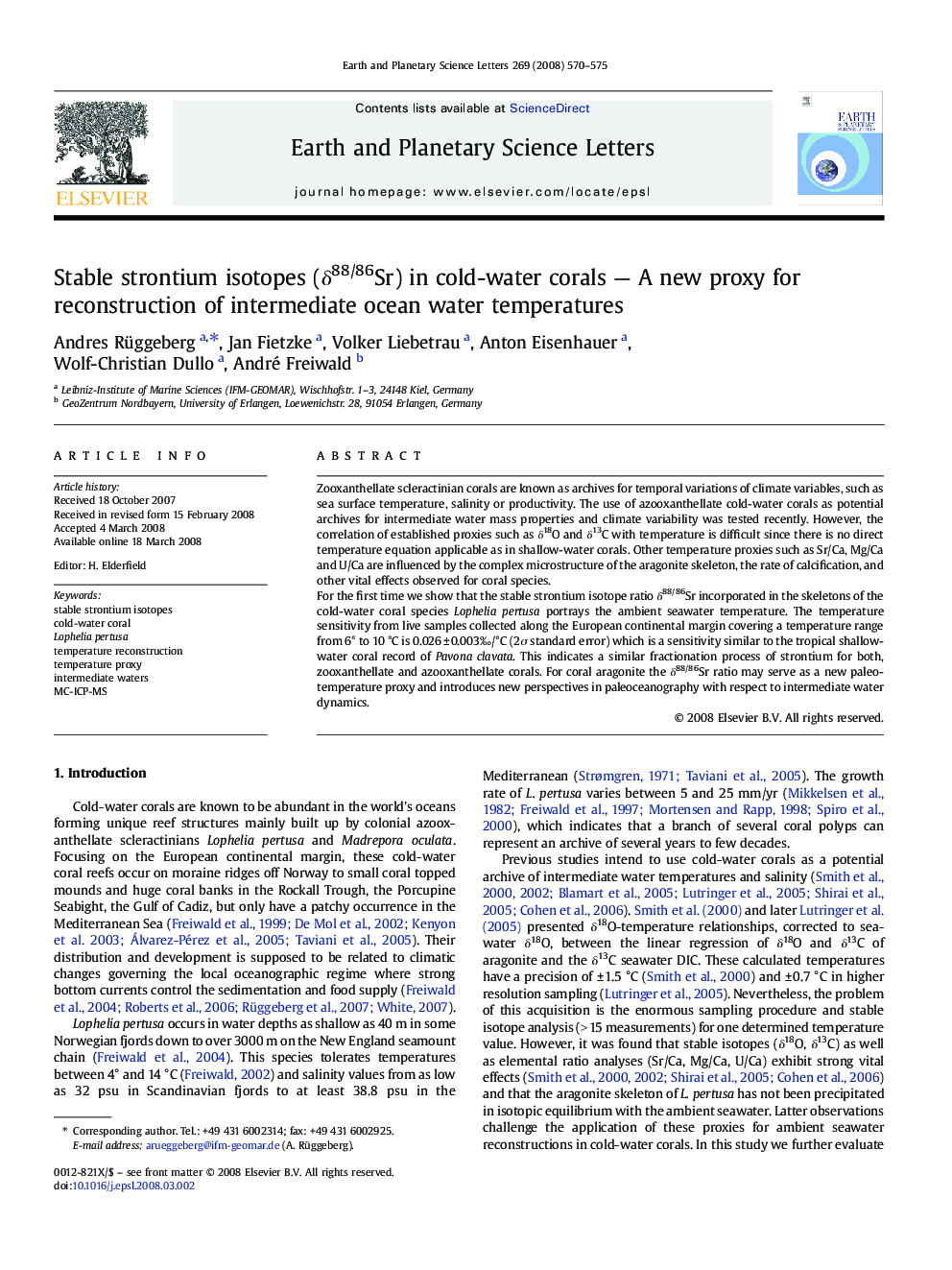| Article ID | Journal | Published Year | Pages | File Type |
|---|---|---|---|---|
| 4679796 | Earth and Planetary Science Letters | 2008 | 6 Pages |
Zooxanthellate scleractinian corals are known as archives for temporal variations of climate variables, such as sea surface temperature, salinity or productivity. The use of azooxanthellate cold-water corals as potential archives for intermediate water mass properties and climate variability was tested recently. However, the correlation of established proxies such as δ18O and δ13C with temperature is difficult since there is no direct temperature equation applicable as in shallow-water corals. Other temperature proxies such as Sr/Ca, Mg/Ca and U/Ca are influenced by the complex microstructure of the aragonite skeleton, the rate of calcification, and other vital effects observed for coral species.For the first time we show that the stable strontium isotope ratio δ88/86Sr incorporated in the skeletons of the cold-water coral species Lophelia pertusa portrays the ambient seawater temperature. The temperature sensitivity from live samples collected along the European continental margin covering a temperature range from 6° to 10 °C is 0.026 ± 0.003‰/°C (2σ standard error) which is a sensitivity similar to the tropical shallow-water coral record of Pavona clavata. This indicates a similar fractionation process of strontium for both, zooxanthellate and azooxanthellate corals. For coral aragonite the δ88/86Sr ratio may serve as a new paleo-temperature proxy and introduces new perspectives in paleoceanography with respect to intermediate water dynamics.
